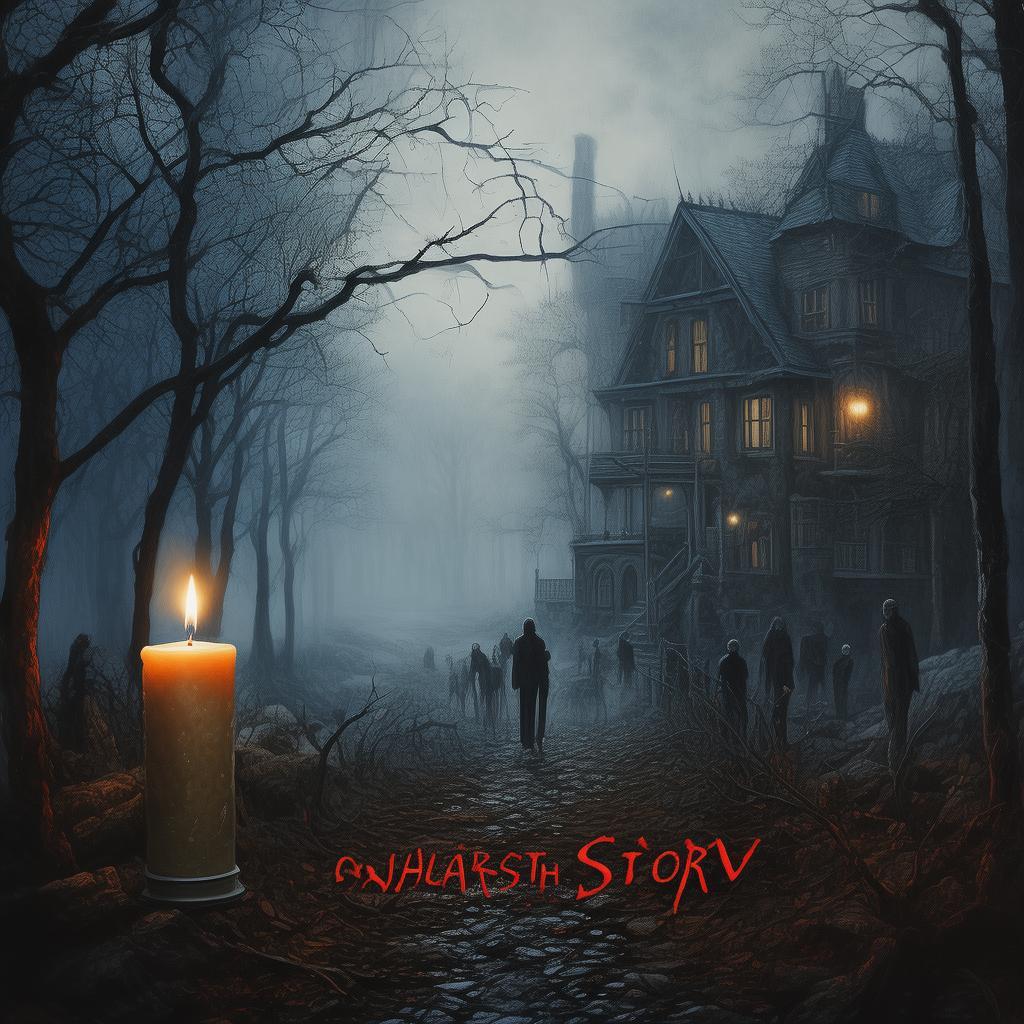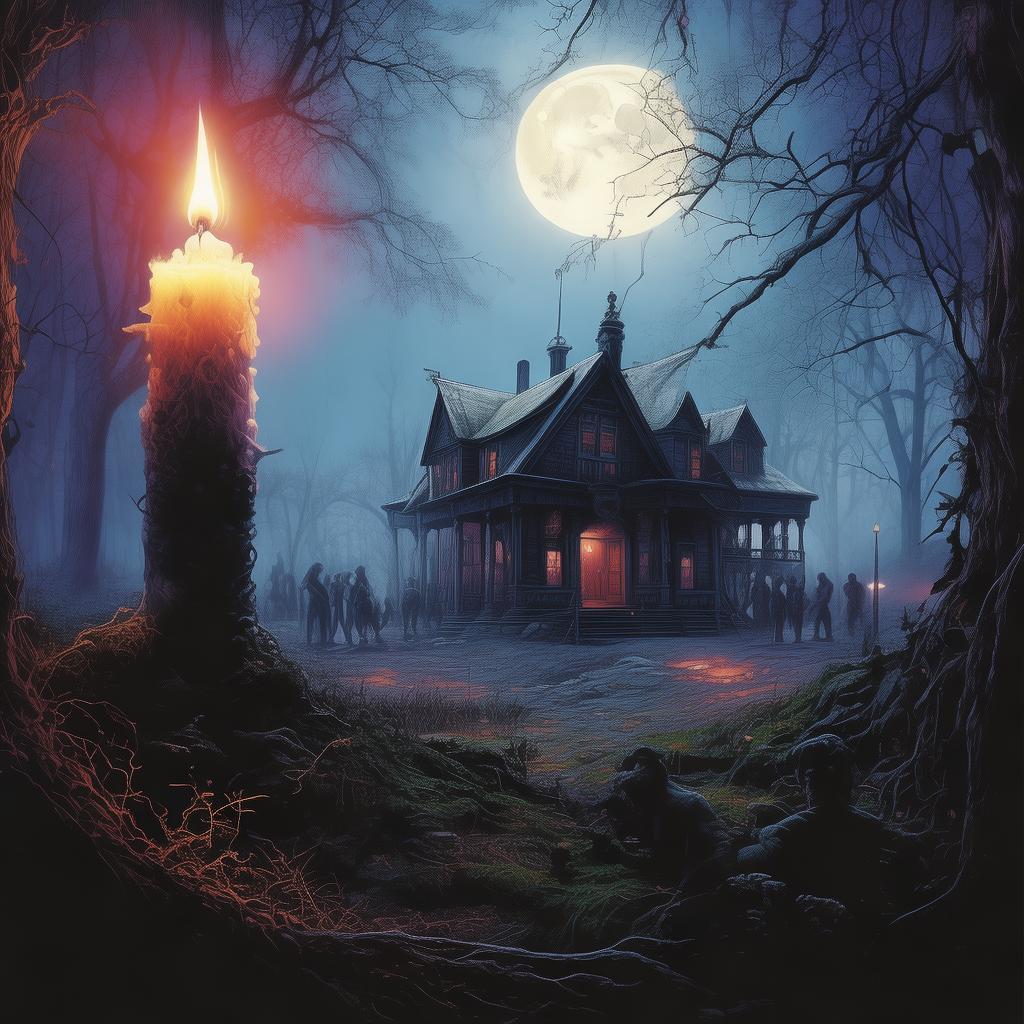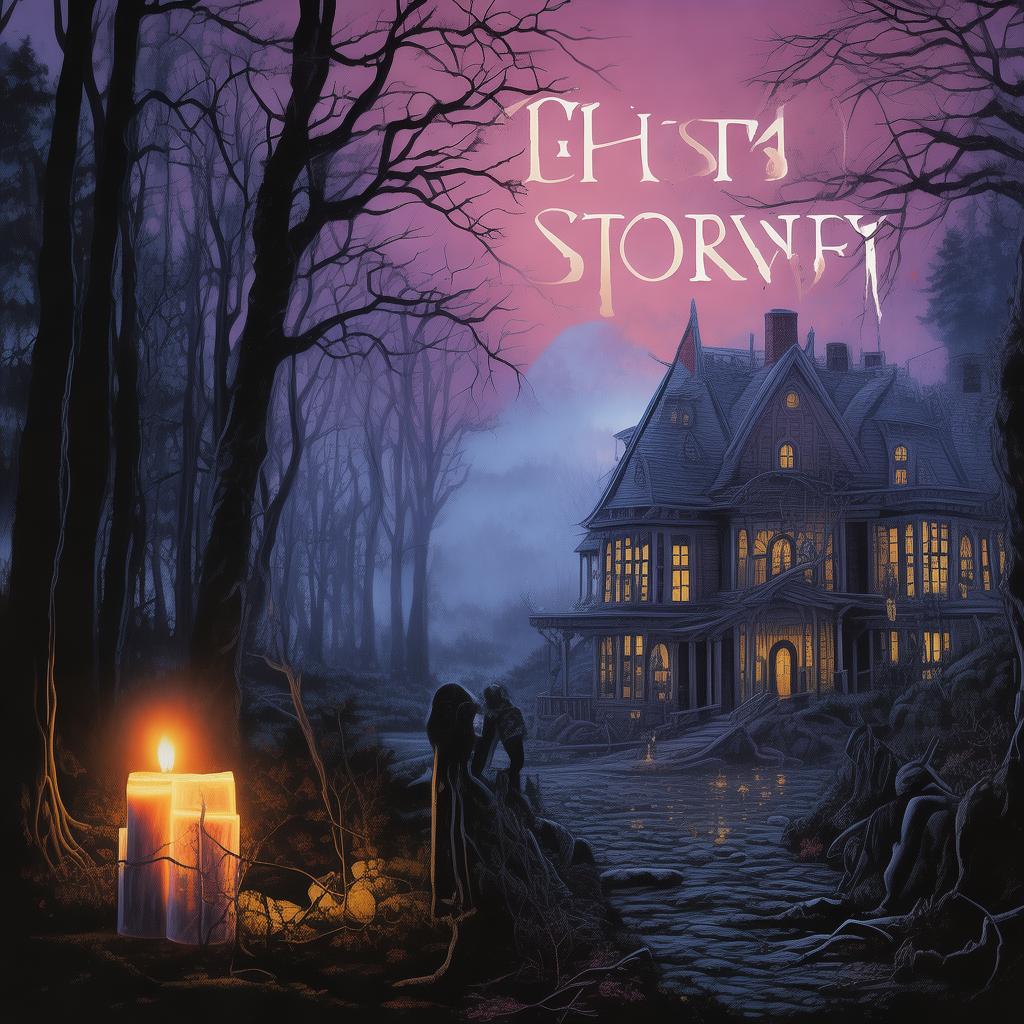The Whispers of the Cursed Doll
In the quaint, foggy town of Eldridge, nestled between rolling hills and dense woods, lived a young artist named Elara. She was known for her intricate paintings, capturing the beauty and tranquility of the countryside. Yet, beneath her gentle exterior lay a restless curiosity, a desire to explore the unknown.
Elara had always been fascinated by local folklore, especially those tales of the cursed. One particularly intriguing story was about a doll, said to be crafted by an ancient witch. The doll was said to hold the soul of the witch herself, and anyone who touched it would be cursed by her unseen touch.
One stormy night, as the winds howled outside and rain lashed against the windows, Elara stumbled upon a peculiar old box in her attic. Inside, nestled in a tattered velvet bag, was the cursed doll. Its porcelain features were unnaturally pale, and its eyes seemed to follow her movements, even in the darkness.
Drawn to the doll, Elara began to research the witch and the curse. She learned that the doll had been hidden away for centuries, passed down through generations of the same family. Each time the doll was uncovered, tragedy followed.
Intrigued and unable to resist, Elara brought the doll to her studio. She spent days painting the doll, trying to capture its eerie beauty. She felt a strange connection to the object, as if it were whispering secrets to her. Each stroke of the brush felt like an invocation, and she couldn't shake the feeling that the doll was watching her.
One night, as Elara lay in bed, she was awakened by a strange noise. She heard the faint whisper of a voice, "Remember me, Elara." The voice was soft, almost melodic, yet chilling. She tried to shake it off, but the words echoed in her mind, growing louder with each passing moment.
Determined to uncover the truth behind the curse, Elara sought out an elderly historian, who had once lived in the same house. The historian told her of the witch, a woman who had been banished to the doll's curse for her dark magic. The doll was a vessel for her spirit, and as long as it existed, so did her wrath.

The historian warned Elara to beware of the unseen touch, for it was a curse that could not be easily broken. Yet, Elara's obsession with the doll grew stronger. She became fixated on the idea that the doll's curse was the key to her next masterpiece.
As days turned into weeks, Elara began to experience strange symptoms. She would feel a cold breeze brush against her skin, hear faint whispers, and see the doll's eyes move when she wasn't looking. She brushed these experiences off as her imagination running wild.
But the symptoms grew worse. Elara started to lose sleep, her paintings became increasingly macabre, and her behavior grew erratic. She spent every night in her studio, working on the doll, convinced that she was close to unlocking its secrets.
One evening, as Elara sat at her easel, painting the doll, she felt a sharp pain in her chest. She gasped, her breath catching in her throat. She looked down and saw that the doll's eyes had turned a deep, glowing red. With a terrifying scream, she fell to the ground, her painting splattered with her own blood.
The next morning, Elara was found lifeless in her studio, surrounded by the remnants of her final painting—a chilling portrait of the cursed doll, its eyes burning like embers in the darkness. The townspeople of Eldridge were shocked and mourning, but no one could understand why the artist, known for her beauty and grace, had met such a tragic end.
The cursed doll was returned to the historian, who kept it locked away in a secure, secret location. From that day forward, the legend of the cursed doll grew, and the townspeople spoke of the unseen touch that had claimed another soul.
Elara's story became a cautionary tale, warning of the dangers of obsession and the perils of the unknown. Her paintings were exhibited in museums, each one more haunting than the last, as if her spirit remained trapped within them, forever seeking release.
The Whispers of the Cursed Doll was a chilling tale of obsession, the supernatural, and the psychological impact of folklore. It served as a stark reminder of the thin line between fascination and madness, and the eternal struggle between curiosity and fear.
✨ Original Statement ✨
All articles published on this website (including but not limited to text, images, videos, and other content) are original or authorized for reposting and are protected by relevant laws. Without the explicit written permission of this website, no individual or organization may copy, modify, repost, or use the content for commercial purposes.
If you need to quote or cooperate, please contact this site for authorization. We reserve the right to pursue legal responsibility for any unauthorized use.
Hereby declared.









